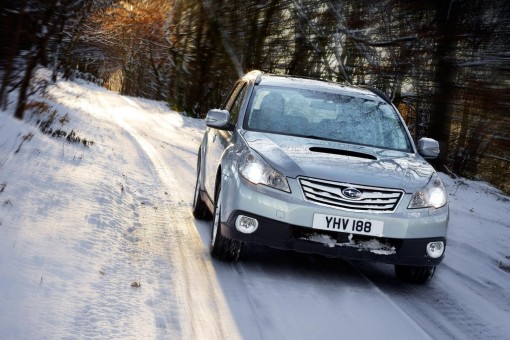Subarus rally to the rescue in icy conditions
DURING the harsh winter conditions we are now faced with, Subaru says its owners are certain to be called upon to rescue friends, neighbours and other motorists stranded in the ice and snow.
With forecasters now predicting a prolonged period of ice and snow for the second successive year, Subaru is preparing its customers for the inevitable, providing practical tips on how they can use their permanent Symmetrical All-Wheel-Drive vehicles to tow snow-bound front and rear-wheel-drive cars out of trouble, safely and efficiently.
The winter-specific tips include guidance on driving techniques and the use of equipment. Subaru advises drivers to check the steering wheel of the towed vehicle is not locked, that its front wheels are pointing in the planned direction of travel (it can be very hard to tell when behind the wheel in deep snow), and that its transmission is left in neutral.
Subaru’s full model range – Legacy, Outback, Forester and Impreza – is equipped with the company’s permanent Symmetrical All-Wheel drive system which directs power to all four wheels, optimising traction in the very harshest winter conditions. Many models also feature Vehicle Dynamic Control, which manages torque distribution, engine output and brakes at each wheel, making adjustments instantaneously when grip levels are reduced in order to keep the vehicle on the chosen course.
Subaru’s Kenyon Neads said: “Our customers have less to fear than most from the snow and ice that winter brings. I helped rescue a neighbour in a rear-wheel-drive vehicle from his own driveway last year, and we know many of our customers will find themselves in similar situations as soon as the snow falls. We want to help our customers respond to appeals for rescue in the safest way possible.”
Subaru’s top tips for emergency winter towing:
1) Know the limits of the equipment – Only use a rope specifically designed for towing road cars, and only tether it to the towing eyelets specified by the manufacturer.
2) Take the strain – The tow rope’s tension should be built up slowly to avoid vehicle damage. When towing, pulling away in second gear in your Subaru can often help minimise any loss of grip.
3) Keep it straight – The towed vehicle should ideally be towed to a safe position in a straight line, reducing unnecessary strain on the towing eyelets and making it easier to avoid the towed vehicle taking an unwanted change in trajectory.
4) Stay loose – Ensure that the steering in the towed vehicle is not locked, and that the wheels are pointing in the right direction before towing begins.
5) Take a neutral stance – The transmission of the vehicle to be towed should always be in neutral. Keep the ignition of the towed vehicle on and the engine ticking over so that the brakes can continue to function.
6) Keep it short – A towed vehicle can be hard to control on icy roads, so only cover the distance necessary to get the towed vehicle out of trouble. Once the vehicle has been towed onto an area of level ground affording adequate traction, both vehicles should quickly but progressively come to a halt. Then check if the towed vehicle is able to move off safely under its own power.
7) Alert other road users – Use warning triangles to mark out the section of road onto which your car and the towed vehicle are about to move. Anyone placing warning triangles in the road should wear a reflective safety vest.

